The flood aftermath – is print back in business?
Nine months after the catastrophic deluge in Kerala, Raju N Kutty, treasurer, Kerala Master Printers Association visits seven printers to tell their tale of survival and courage
28 Jun 2019 | By PrintWeek India
In the previous issue of PrintWeek India we had shared personal accounts of some of the printers affected by the 2018 Kerala floods. Tragedies tend to bring out the best in people – this was evident during those fateful days of August. Most of us put our best foot forward and rose up to the occasion to bring the industry back on its feet as soon as possible.
Ironically, after the flood waters receded people went back to being themselves and there was a lot of political turbulence in the months thereupon. By all accounts, 2018 is going to be the year Kerala will never forget.
At Kerala Master Printers Association (KMPA), we meticulously collated data about the losses suffered by the members, and shared what we learnt at every possible opportunity. At the Governing Council meet of the All India Federation of Master Printers, we spoke at length about the risks for print in an era where climate is increasingly unpredictable and extreme.
For instance, if your printing unit is near a river with a dam installed, too, then you need to be cautious. It is a ticking time bomb. An unusually heavy rainfall would force dam authorities to open its shutters and your unit could get submerged.
Many printers are struggling to bounce back after suffering the double whammy of machine breakdowns and production losses. It takes years to recover from a six to seven-month halt in production.
We decided to revisit the journey we took in August 2018 to see how the printers have recovered over the span of almost a year. I set out first to Chalakudy to meet Rajan Vattoly of Nirmala Offset Printers and Fr. George of Divine Printers and Publishers.
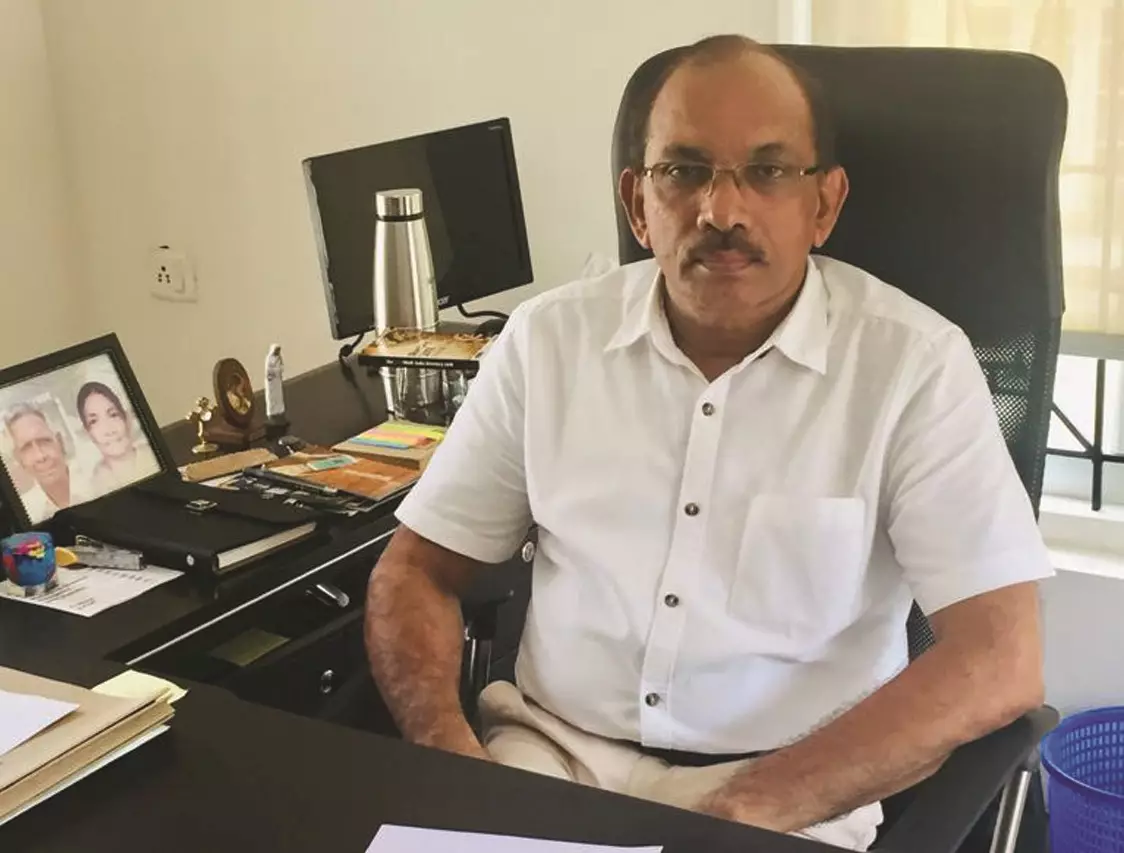
Rajan Vattoly of Nirmala Offset Printers
Nirmala Offset Printers is a part of the Nirmala Group of Institutions which operates a couple of women’s colleges in the vicinity. Vattoly also has other businesses to care for; he was handling a couple of anxious parents as I entered. An astute businessman used to multitasking, he took very little time to disconnect from the issue at hand and talk about his printing business. The main printing machine at his unit was almost up and running but for some issue in the inking system which was almost resolved. It took almost a year for this Japanese-made machine to be operational again. Vattoly jokes, “The service engineer handled the screwdriver as if he was about to light a firecracker – with utmost caution.”
A printing machine which does inking, registration, and dampening through the CPC has lots of drives, motors, and pneumatic systems running it. When they all come crashing down, the process of getting it back up is time-consuming. Often, errors will point in one direction and soon show a new error as multiple systems are dysfunctional. Such critical PCBs and drives need not necessarily be available locally as they rarely need replacements. They need to come from Japan or Germany as the case may be. Besides, service engineers find it difficult to accurately predict the number of days an assignment would take thanks to the enormity of the problem. This creates a situation of conflict. The service provider is forced to request for advanced payment owing to the ad hoc estimate of the number of service days. Spares, of course, need to be paid for in advance.
All this is nobody’s fault; it is typical business dynamics. Nevertheless, it tells you how fragile your business actually is when the rubber meets the road.
Vattoly also had a digital machine from Konica Minolta which was debilitated. “I had bought the machine without any financing as the investment was not high,” he says ruefully.
Vattoly is content that he has retained all his employees. The very next week after the flood, he paid Onam bonus to his team and in the subsequent month he also paid half a month’s salary! When the production was down, they agreed to work on a reduced salary to alleviate his burden to some extent. His customers also came out with a helping hand and he was able to realise all his market outstanding in the following month. This provided him with the valuable working capital to meet urgent repair costs.
Divine Printer and Publishers had similar experiences to narrate. On the first day, when we had met Fr George Thayyanattuveli, the manager, he was in gumboots and overalls, cleaning the premises just like any worker. Today, he was in his office speaking to his employees with the same calm demeanour.
Divine stands beside Chalakudy River and was one of the worst-affected areas. Fr George pointed towards an exhaust fan at a height of about nine feet to indicate the height of water that had came in. I could barely imagine the sight.
Of the entire set-up the Heidelberg machine could be repaired but the CTP platesetter and Welbound’s perfect binding machine had to be replaced. The CTP system engineers strived for 15 days before giving the verdict. However, the supplier agreed to provide another system at a discounted price.
Out of an insurance claim of Rs 700,00,000, nothing had come in yet. As Divine has up-to-date documentation of all the damages and repairs, the claim should be processed soon. In the meantime, Fr George has taken an interim term loan of Rs 4.5 crores for the repairs. “Most of our machines are now up and running and with a repayment holiday of one year there is a relief. Once the insurance claim money is received, the loan can be paid off,” hopes Fr George. Not to mention, he has taken care of his team and paid them salaries plus Onam bonus.
National Printers in Perumbavoor is located in a residential area, en route to Kalady. CP Saju and his wife Seena run the company, set-up in a tranquil area, beside their house. They started their business with a screen printing unit. Humble and meticulous, Saju had his house in order and all his machines were insured. As I sipped on sulaimani tea, I could see that a final round of tests was being run on his Komori. Saju is ably assisted by Raveendran, a senior technical consultant and an experienced industry hand. In his heyday, Raveendran was at the helm of Modern Graphics and was considered one of the earliest exponents of high-quality printing; a story for another time.
Raveendran’s presence and support helped National Printers bounce back to life. “I started constructing my first floor to shift my office and CTP there. I wanted to develop something to keep myself engaged,” says Saju. This sentiment was common to Nirmala Offset’s shopfloor, where Vattoly constructed extensions to his office so that the ‘feeling of moving forward is prevalent’. Saju remembers with affection the small but timely support that the KMPA had extended.
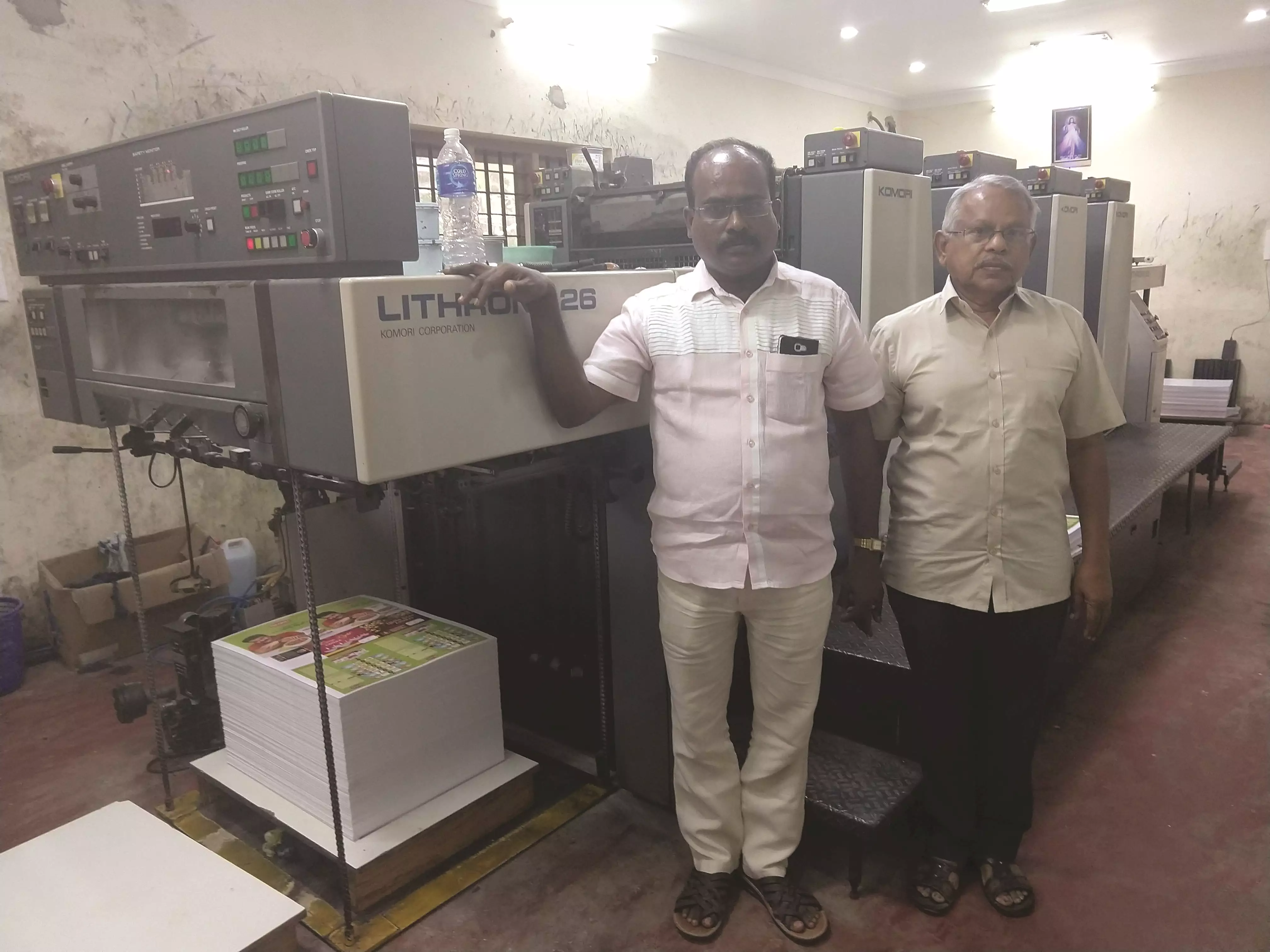
(l-r) Saju of National Printers alongside Raveendran and the Komori that is back in operation
Even though Saju was lucky with his printing machine, he was not so fortunate with his CTP system. The thermal system, including the processor, was completely damaged and he had to bring in a new one – a new investment with a completely new liability to boot.
Raveendran pointed to the fact that no support came in from the government in spite of having all the documentation in place at the District Industries Centre. Governments and systems work at their own pace and with their own priorities. Small industrialists might not be a priority for them considering the onerous task of repairing or providing homes. I realised that our work is not done yet.
Sajeevan of SN Printing Press, Aluva, is also one of the most-affected printers. SN Printing Press is a case in point with regards to receiving adequate guidance on insurance.

The final stage of repair at SN Printing Press
Sajeevan sounded philosophical and poetic as he elaborated on his plans for the future - to make time for himself and enjoy the fruits of working hard for decades. His is one of the rags to riches stories. Outside his office you see a board in Malayalam – Pushpapathukam purathu vekku, nagna patharaay akathu varu. Meaning, ‘Keep your footwear laced with flowers outside, enter with your bare foot.’ These are part of the lyrics of a beautiful Malayalam classic created by the incomparable Vayalar-Devarajan duo and rendered by an equally incomparable KJ Yesudas. The song goes – Chakravarthini ninakku njaanende shilpagopuram thurannu……….Pushpapathukam purathu vekku nee nagna pathayaay akathu varu……….. “O Empress I have created for you a sculptured temple, remove your footwear flowered and please come inside in your bare feet”.
Today, Sajeevan is working on his three machines – two Komoris and one Heidelberg. As I went into his press room, I could see two machines with their frames removed and all the gears in oil. SN Printing Press is almost back in the game and it would only be a matter of a few more days before all the three machines are back in operation. With the support of industry friends such as Faisal Ikka of Memphis and Jotty George of Maptho, he is able to cater to his clients and is confident about regaining his clientele once his machines are fully operational.
If technical problems of sophisticated machines present one set of challenges, getting your insurance claims processed is a different ball game altogether. Many insurance companies have tried to settle claims at 30% of the losses. Unless you really have your documentation in order, it is an uphill task to get your claims reimbursed. Ummer Farook of Cochin Printech realised this with dismay as he met his surveyor and the regional office team at his insurance provider company. He found that all his inventory losses were discounted and the insurance company offered to settle at a far lesser level than he had submitted. Since his losses were well-documented, he got his stock loss statements valued and certified by his chartered accountant.
Printing jobs for newspapers and magazines necessitates heavy investment in paper, which will obviously be in three stages: raw material, semi-finished goods, and finished goods. This also needs to be considered while preparing inventory valuation. Thus, inventory levels at Cochin Printech were huge and stock destruction losses amounted to Rs 91 lakhs. It was not underinsured either as Farook had insured to the tune of Rs 1.5 crores. A decision on insurance settlement has not been forthcoming and an interim settlement of about 10% of the loss has been made. On top of it, the amount of time and efforts has frustrated Farook in no small measure. “I sometimes feel like winding up this operation but it’s not just about me but my 100 plus employees and their families. Thinking about them keeps me going,” he says.
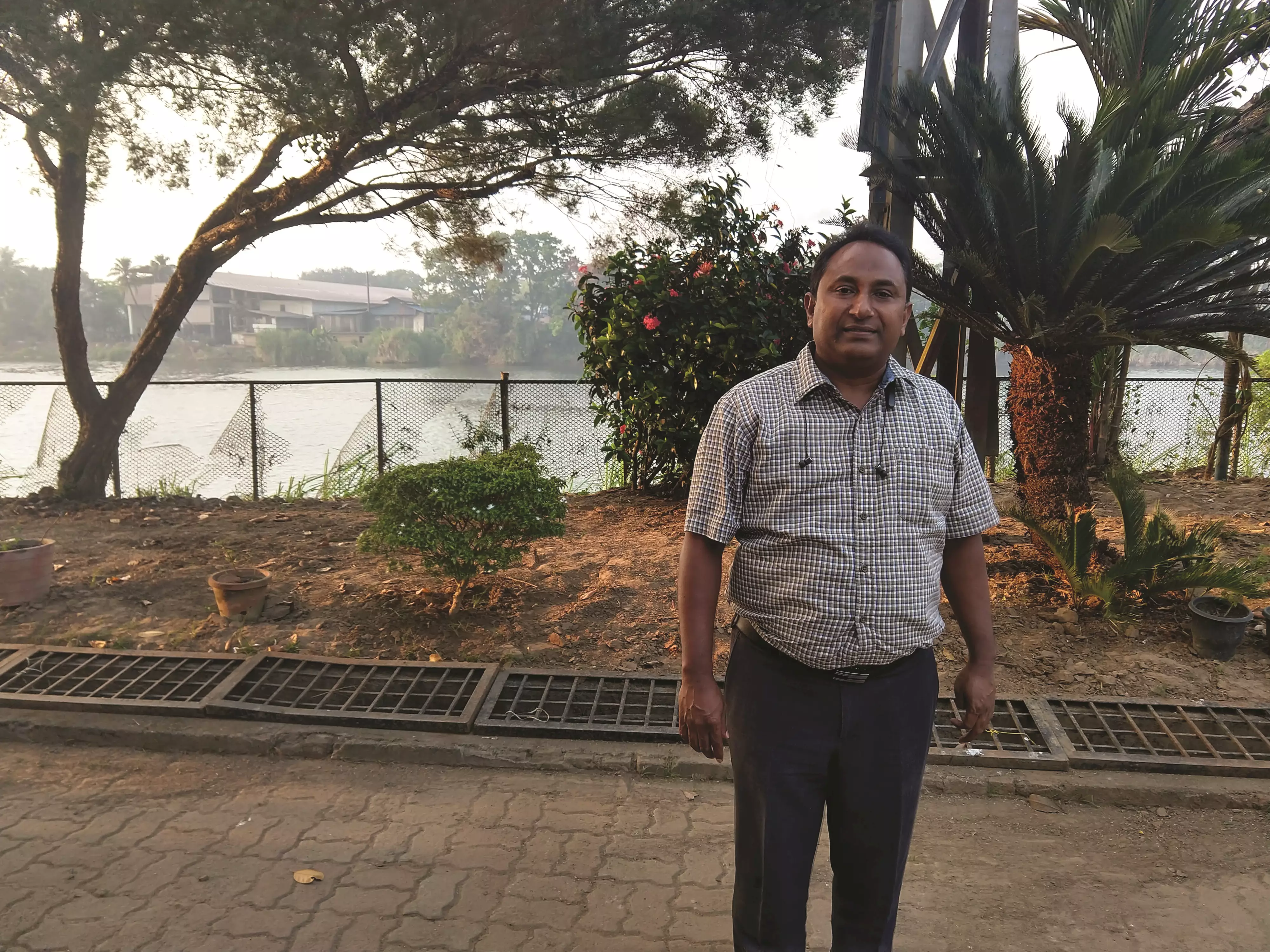
Ummer Farook in front of the river
This is a common sentiment among the affected printers. Having started and run a business enterprise for a few decades, there is no cutting back. You keep going, come what may, because there are people who are depending on the enterprise for their livelihood.
Farook got his team shifted to a friend’s apartment in a safer area. Over 20 people were accommodated there for a couple of days until a relief camp was set up at Rajagiri Public School. He started lending a hand at the camps for distributing relief materials which were sent across by his friends from Bengaluru. “My 20-year-old son Hashin Raheen was driving my company vehicle to deliver relief material in neighbouring camps,” says Farook with a sense of pride.
He also recollects the serendipitous help that came his way in the form of a friendly printer based out of Chennai who offered his CTP at Rs 10 lakhs – five lakhs down payment and 10 installments of Rs 50,000 each. Assistance also came his way in the form of Shreekumar – a technician whom he had recruited a day before the floods. Shreekumar reported to work immediately after the floods, even before he could be summoned for duty. He then went on to clean and replace about 80 machine motors with the help of a machine operator from Tamil Nadu.
Insurance claim settlements seem to follow a pattern of companies trying to settle claims with a discount. Suffering printers often have had to accept such discounted settlements when they are pushed to the wall, and in need of the funds urgently to get their business back on track. This happens because insurance is a complicated business and most of us do not read the fine print in our policies with the diligence they deserve.
Padmalochanan (Unni) of SR Graphics in Aluva had a similar experience with the insurance company when his loss of Rs 1.2 crores of stock was settled at about Rs 50 lakh. His choices were limited as he was running out of working capital. Unni’s machines are almost back in operation. Most corrugation machines, platen die cutters, and lamination machines are relatively easier and cost effective to repair since they do not have electronic cards and programmes. Most of the time, you clean and grease the mechanical parts, dry and re-varnish the main motors and you are ready to go.
For Unni this proved to be a blessing and soon he was able to cater to his customers. But he had difficulty in replenishing his stocks in the corrugated cartons manufacturing business the board cost is almost 60% of the cost of the end product. For Unni, the cost is more personal as he lost almost all his belongings including his cars and most of his furniture. He was the one most personally affected as he was marooned in his house for three days as the Periyar gobbled up his house almost upto the first floor. Unni is now looking at rebuilding his house and, of course, buying a new car in the coming months; hopefully, after his business picks up again.
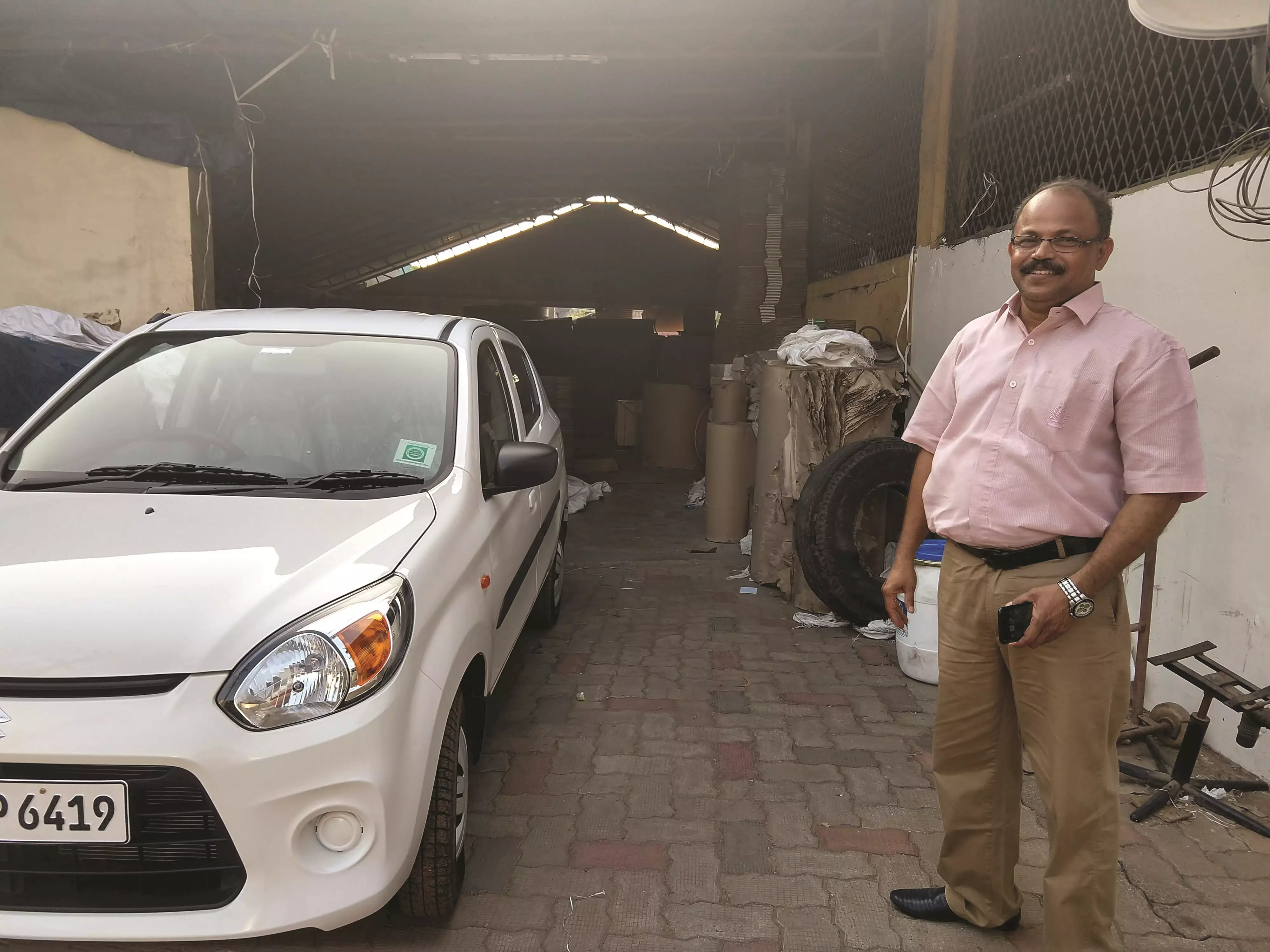
Unni of SR Graphics at his renovated unit
Hope (as said in the classic movie The Shawshank Redemption) is a good thing, maybe the best of things. And good things never die.
Nothing underlines the relevance of the above statement than Venugopal and his team’s spirit at Sterling Print House. Venugopal possesses rare skills which helped him bring up his team and company in record time.
If there is a printing company that can be a benchmark for recuperating from a disaster, then it has to be G Venugopal’s Sterling Print House. Last Onam I had the privilege of visiting the plant to see him leading his team in setting things back in order. The Sterling team, led by Venugopal, achieved a near impossible feat – a company completely submerged with 50 odd machines back in operation in just about a month! Additionally, a month or so later, Sterling Print House installed the first Multiwave UV Printing Machine from RMGT and also conducted an open house at his facility to show the new technology at work. The turbo-charged recovery of Sterling Print House was richly rewarded at the recently concluded National Awards for Excellence in Printing where the company bagged 11 awards and the icing on the cake was Venugopal being felicitated with the special award for the Most Resilient Printer.

G Venugopal of Sterling
While sipping on green tea, I ask him about his journey. “It is not the machines that make a press. It is the people. From the beginning I believed and psyched myself that I am not letting this pull me down. I convinced, rather bluffed myself that nothing has happened and we are coming up in record time. As I was convinced I could convince my team,” says Venugopal. I could only nod my head in awe. “You need to know your people, their strengths and weaknesses. You then need to play to their strengths and underplay their weaknesses,” he adds. The Sterling team showed exemplary determination and in order to help their particularly battered employees, they formed a special team which visited those employees’ homes and helped them clean. This helped a few demoralised employees to regain their mojo and some of them started improving their performance on the job significantly.
With customers Venugopal did not encounter any such luck and Sterling’s outstandings remained pretty much the same. In order to meet a massive repair bill of about Rs 2.5 crores, he had to raise a bank loan of Rs 1 crore and unsecured loans of Rs 1.2 crores. Of course, once his insurance settlement is through he would be able to close these loans and move on. Since his documentation is in order, Venugopal looks set to get the claim settled very soon. There is again a 20% deduction on the claim which will be depreciation. Apparently, a reinstatement clause in the insurance policy will help you to get a claim completely settled.
In addition to his team, Venugopal’s relationship with his suppliers helped him in no small measure during these difficult times. “If not for the timely support from suppliers such as Provin, TechNova, Autoprint, Horizon, and many more, I would not have been able to get my machines back in operation.” This is in largely due to the cordial relations and credibility that Sterling Print House has painstakingly built up with all its partners. This is an important business dynamic which many of us don’t appreciate enough.
This pretty much summarises the story of print which faced one of its most fearsome challenges. At the end of the day, we at KMPA realise that what we have been able to do for our printer community is miniscule indeed. The fact that all of our affected members deeply appreciated KMPA’s efforts shows their large heartedness. At KMPA we are indeed humbled seeing their strength and will power.
As Vattoly of Nirmala Offset Printers concludes, “I was somehow able to recover from this one experience. I simply do not think I am up to the job if a tragedy like this happens again.”
We also hope none of them have to... ever again.
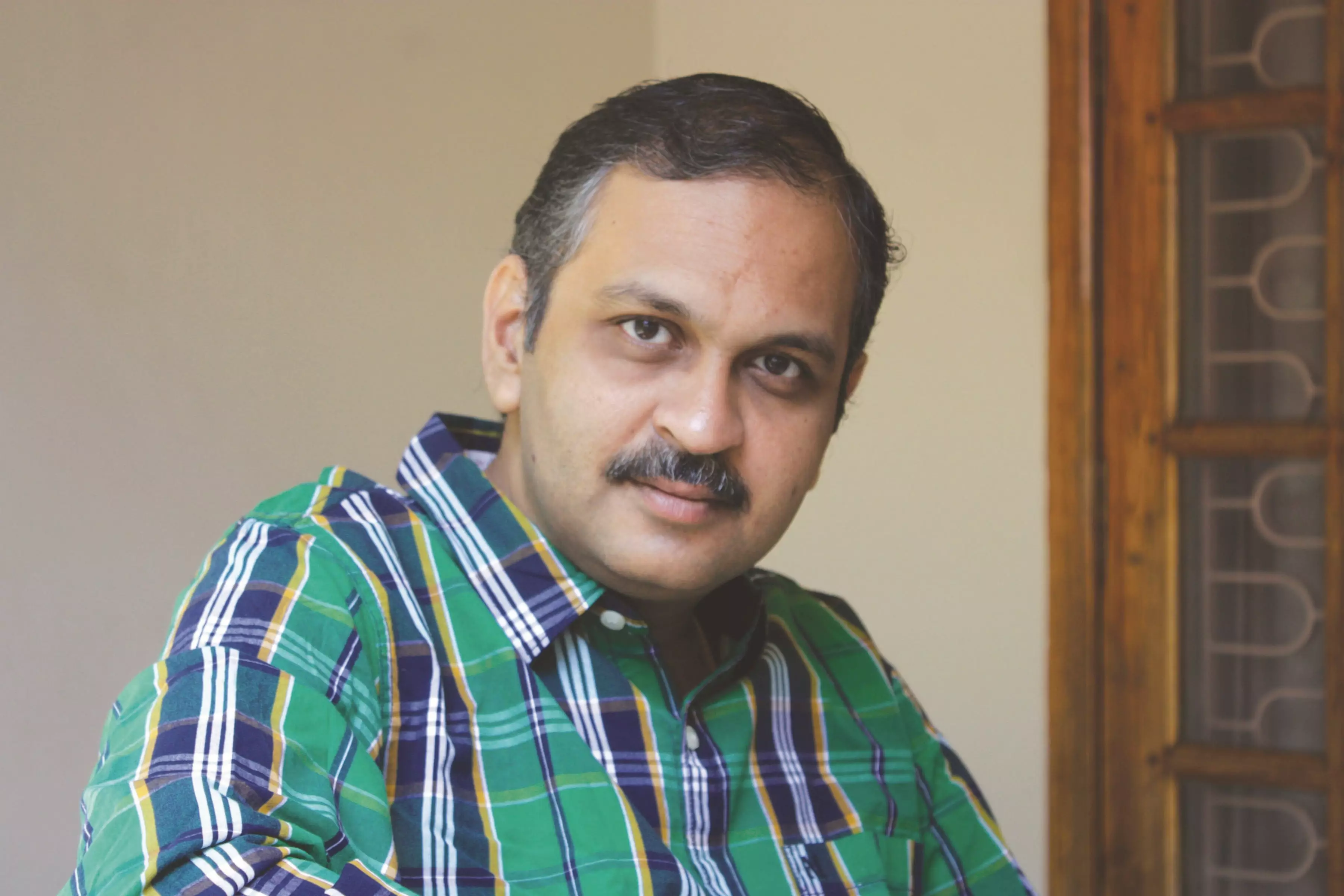
This contribution is made by Raju N Kutty of Purandara Laser Technologies


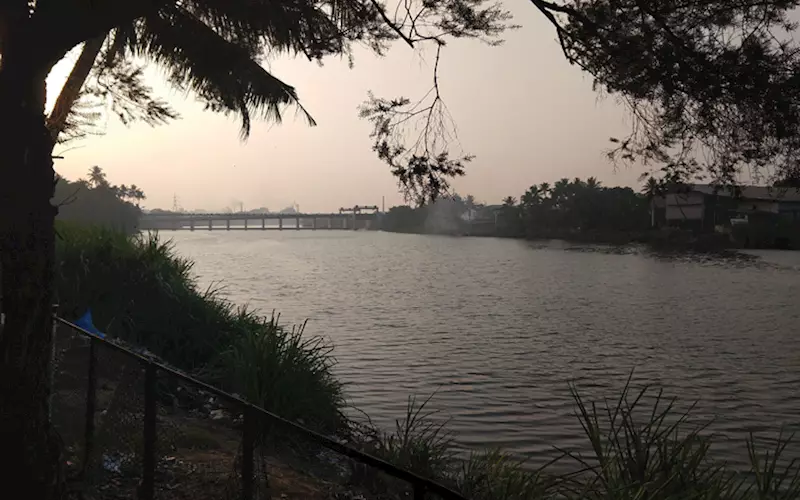











 See All
See All